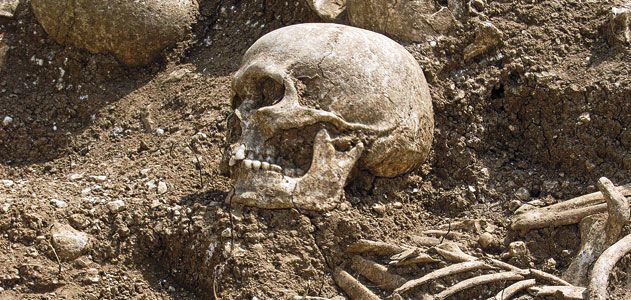Viking Mass Grave in Oxford: Viking Warriors Met Demise
Every time the blade touched the earth, something mysterious revealed itself to the public eye.
The Vikings did fail and they had to pay the ultimate price for each time they lost the battle. Before they could enter the gate of Valhalla, the warriors had to fight and met their violent demise. This was vividly evidenced in the Viking Excavations of mass graves.
In January 2008, the archaeologists were invited to the site to St John’s College before the construction on the site was carried out. And it turned out to be that this invitation was a wise choice because the site where the construction was about to be built consisted of many important historical objects. First, the archaeologists brought out a Neolithic earthwork enclosure. Very soon after, they found out a lot of goods like pottery and food debris on the site as well. The most exciting part is that they found out a mass grave under the site that consisted of remains of more than 30 individuals.
At first, the archaeologists only thought that it was a part of an individual only. But the more they dug, the more they found out that there were more and more of them.

Viking skeletons found inside a mass grave in Oxford
Then after a month of excavation and about 2 years of lab tests, the archaeologists concluded that there were about 34 - 38 individuals that were buried inside the pit. All of them must have met a bloody and violent fate.
Signs on the skeletons revealed that these skeletons had the punctures in their vertebrae and pelvic bones. About 27 skulls were cracked or broken suggesting that these victims could have encountered seriously violent head injuries. Signs on the ribs helped the archaeologists to be sure that these victims were stabbed from behind. Some victims even got seriously burnt in their bones.
Radiocarbon resulted showed that these victims lived around 960 – 1020 AD.
Originally, the archaeologists believed that it was a mass execution. However, this Oxford grave didn't match the typical execution cemetery. The victims inside the Oxford grave were more likely to have been killed at once while the typical execution cemetery contained the bodies of people who died over the course of history. Moreover, victims of a typical execution tended to be various in age, shape, and gender. But the victims inside the Oxford graves were more likely to be male with robust body and they were around their fighting age, around 16 - 25 years old.
The archaeologists carried out to study the food that these victims once consumed. And it turned out to be that they consumed more fish than a common Anglo-Saxon man did. It made the archaeologists come to the conclusion that these were the Viking warriors.
According to the Anglo-Saxon Chronicle, the King during that period was Aethelred the Unready. The King was informed by his men that the Viking mercenaries whom he had paid to protect his kingdom were about to come back and assassinate him. Whether this was real or fabricated, the King historically ordered his people to kill all the Danes who settled in England: the St Brice’s Day Massacre (13th November 1002).

The St Brice’s Day Massacre
The scholars believed that the victims inside the Oxford grave were probably the victims of Aethelred's plot to permanently ward the Danes off his territory.
But the triumph of Aethelred was short-lived and it quickly turned out to be that this was a wrong move of the King. Gunnhild who was the sister of the great Viking king Sweyn Forkbeard was allegedly killed during the St Brice’s Day Massacre although her body was never to be found. In the face of death, Gunnhild declared that "the shedding of her blood would cost all England dear". In 1017 AD, Sweyn’s son, Cnut, became the King of England.




